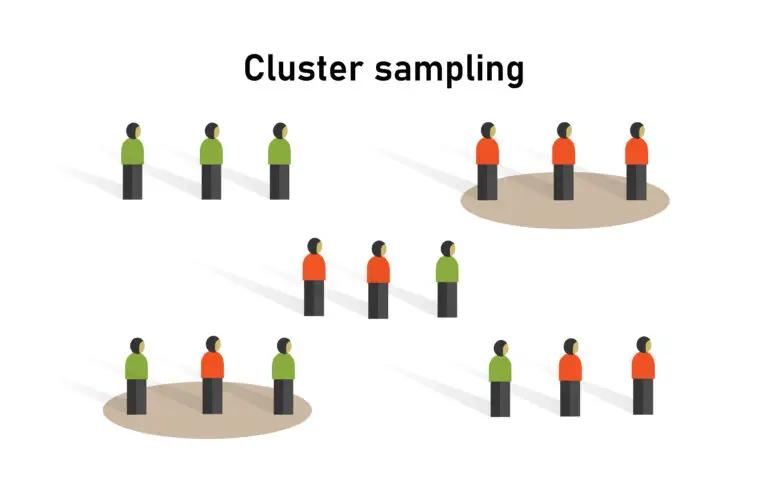Cluster Random Sample

Table of Contents
What is Cluster Random Sampling?
A cluster random sample is a sampling technique used in statistics where the population is divided into clusters or groups, and a random sample of clusters is selected for inclusion in the study. This method is particularly useful when it is difficult or impractical to sample individuals directly from the entire population.
Clusters are predefined groups within the population that are relatively homogeneous or similar to each other in some way. These clusters can be geographic regions, schools, households, communities, or other naturally occurring groupings.
Cluster Sampling Process
- In cluster random sampling, researchers first divide the population into clusters based on certain criteria, such as geographical boundaries or administrative units.
- Then, a random sample of clusters is selected from the population. This random selection can be done using random number generators or other randomization techniques.
- Finally, all individuals or elements within the selected clusters are included in the sample. This differs from other sampling methods where individuals are directly sampled from the entire population.
Statistical Analysis
When analyzing data from cluster random samples, researchers need to account for the clustered nature of the sample. Statistical techniques such as cluster-level analysis, multilevel modeling, or adjusting standard errors for clustering can be used to address these issues.
Advantages
- Practicality: Cluster sampling is practical and efficient, especially when the population is large and geographically dispersed. It reduces logistical challenges and costs associated with sampling individuals from a wide area.
- Resource Efficiency: Since clusters are sampled instead of individual units, cluster sampling can be more resource-efficient in terms of time and effort.
Disadvantages
- Increased Variability: Cluster random sampling can introduce more variability into the sample than other sampling methods. This is because clusters may differ, leading to greater heterogeneity within the sample.
- Potential for Cluster Effects: Clustering can lead to cluster effects or intra-cluster correlations, where individuals within the same cluster may be more similar to each other than individuals from different clusters. This can affect the precision of estimates and statistical analyses.
Cluster Sampling Examples
- Schools can be considered clusters in a study on educational outcomes, and a random sample of schools can be selected to participate. All students within the selected schools would then be included in the sample.
- In a healthcare study, hospitals or clinics can be treated as clusters, and a random sample of hospitals or clinics can be chosen to study patient outcomes. Patients within the selected healthcare facilities would constitute the sample.
Related Links
Convenience Sampling
Observational Study
Simple Random Sample
Snowball Sampling